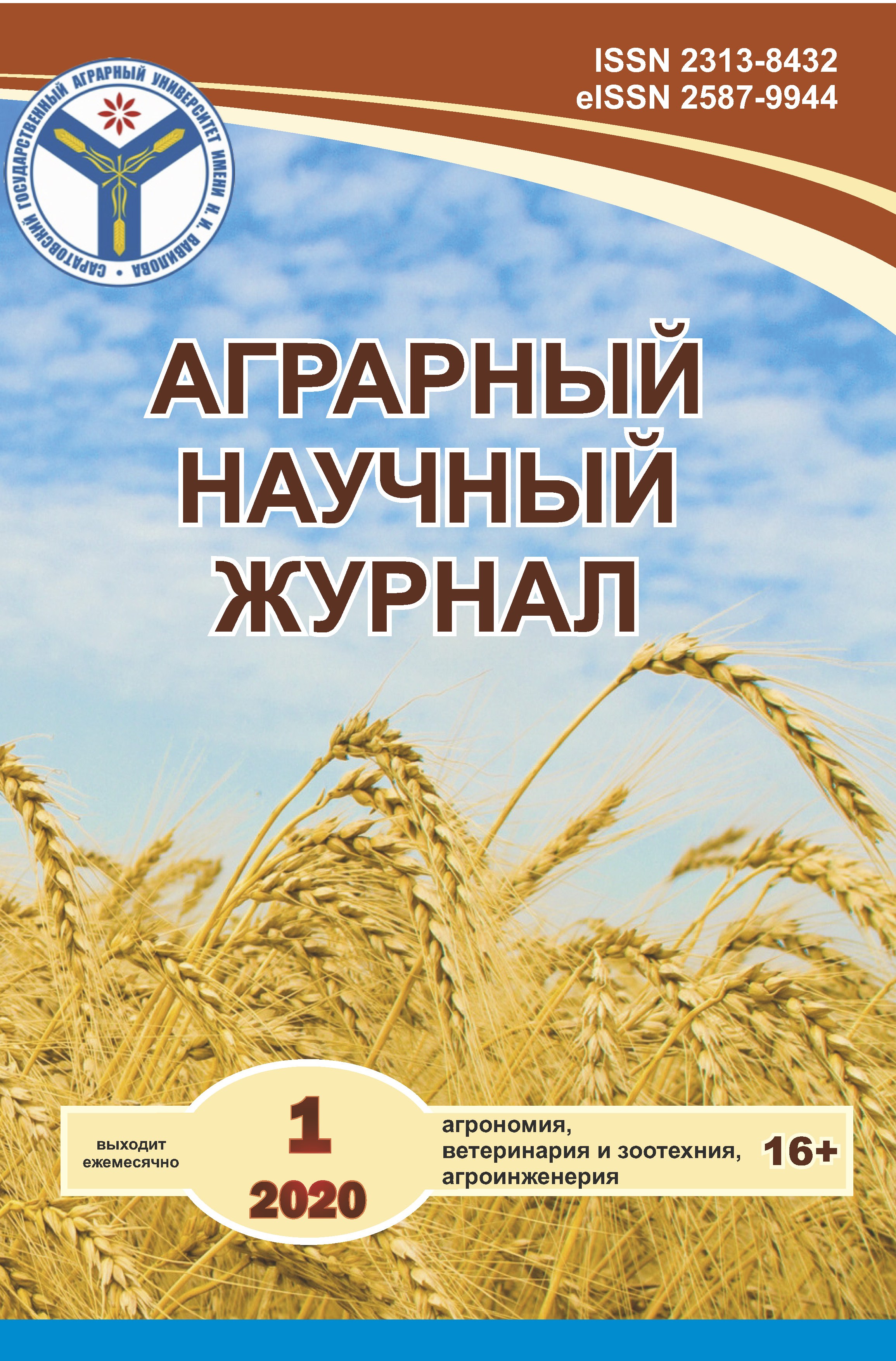Application of mineral fertilizers and bacterial preparations under sunflower on ordinary chernozem
DOI:
https://doi.org/10.28983/asj.y2020i1pp4-8Keywords:
sunflower, associative nitrogen fixers, mineral fertilizers, ordinary chernozemAbstract
The results of field experiments to study the effect of mineral fertilizers and bacterial preparations on the yield and quality of sunflower seeds are presented. The studies were carried out in 2011–2014 in the Rostov region on medium-power ordinary chernozem. The object of research was a hybrid of sunflower Patriot. The predecessor is winter wheat. Ammonium nitrate, ammophos and potassium chloride in various doses were used as mineral fertilizers, according to the experimental scheme. Fertilizers were introduced before sowing, before the main tillage and pre-sowing cultivation. Bacterial preparations were represented by associative nitrogen fixers of the strains Mizorin, Flavobacterin, PG-5 and 17-1 produced by the All-Russian Scientific Research Institute of Agricultural Medicine, Pushkin. In the field experiment, variants of the joint application of mineral fertilizers and presowing treatment of seeds with bacterial preparations were also studied. The control was the variant without the application of mineral fertilizers and bacterial preparations. The Patriot sunflower hybrid seed yield in the control variant on average for 3 years amounted to 1.61 t/ha. A significant increase in the yield of sunflower seeds and oil gathering was established in the variant with pre-sowing application of mineral fertilizers in a dose of N40P50. The increase compared to the control variant was 0.53 t/ha, or 34.2%, and in the oil gathering in the crop - 226 kg/ha, or 36.4%. The application of biologics of associative nitrogen fixers contributed to an increase in the yield of sunflower seeds. Inoculation of sunflower seeds with a strain of the biological preparation PG-5 was more effective. The increase in the yield of sunflower seeds amounted to 0.44 t/ha, or 28.6% compared to the variant without the application of fertilizers. The increase in the oil gathering in the crop was by 29.3%. The application of bacterial preparations under sunflower against a background of nitrogen-phosphorus fertilizers was ineffective.
Downloads
References
2. Агафонов Е.В., Громаков А.А. Влияние рельефа и удобрений на плодородие чернозема обыкновенного и продуктивность ярового ячменя. – Пос. Персиановский, 2008. – 142 с.
3. Гуматизированные удобрения и их эффективность / Г.А. Гармаш [и др.] // Агрохимический вестник. – 2013. – №2. – С.11–13.
4. Горянин О.И., Горянина Т.А. Эффективность возделывания сельскохозяйственных культур в степном Заволжье // Аграрный научный журнал. –2013. – № 11. – С. 19–22.
5. ГОСТ 28268-89 Почвы. Методы определения влажности, максимальной гигроскопической влажности и влажности устойчивого завядания растений. – Режим доступа:Internet-Law.ru.
6. ГОСТ 29269-91 Почвы. Общие требования к проведению анализов. – Режим доступа:Internet-Law.ru.
7. Доспехов Б.А. Методика полевого опыта. – М.: Колос, 1985. – 416 с.
8. Зональные системы земледелия Ростовской области на 2013–2020 годы / под ред. В.Н. Василенко. – Ч. 2. – Ростов н/Д, 2013. – 272 с.
9. Качество маслосемян подсолнечника в Среднем Заволжье / О.И. Горянин и [и др.] // Аграрный научный журнал. – 2019. – № 11. – С. 4–7.
10. Лукомец В.М. О состоянии и перспективах производства масличных культур в Южном Федеральном округе / Инновационные пути развития агропромышленного комплекса: задачи и перспективы: междунар. сб. науч. тр. Донская аграрная научно-практическая конференция / ФГБОУ ВПО АЧГАА. – Зерноград, 2012. – С. 289–304.
11. Малюга Н.Г., Квашин А.А., Загорулько А.В. Подсолнечник. Биология и агротехника выращивания на юге России. – Краснодар, 2011. – 302 с.
12. Производственно-экономические показатели агропромышленного комплекса Ростовской области и соседних регионов России за 2013 год: Официальный портал правительства Ростовской области. – Режим доступа: http://www.donland.ru/Default.aspx?pageid=124097.
13. Способы повышения плодородия почвы и урожайности подсолнечника в Нижнем Поволжье/ Ю.Н. Плескачев [и др.] // Аграрный научный журнал. – 2018. – № 2. – С. 28–31.
14. Устенко А.А., Усатов А.В. Болезни и вредители подсолнечника: учебное пособие. – Ростов н/Д: Изд-во ЮФУ, 2010. – 110 с.
15. Чекмарев П.А. Состояние плодородия почв и мероприятия по его повышению в 2012 г. // Агрохимический вестник. – 2012. – № 1. – С. 2–4.
16. Юдин Ф.А. Методика агрохимических исследований. – М.: Колос, 1980. – 366 с.








